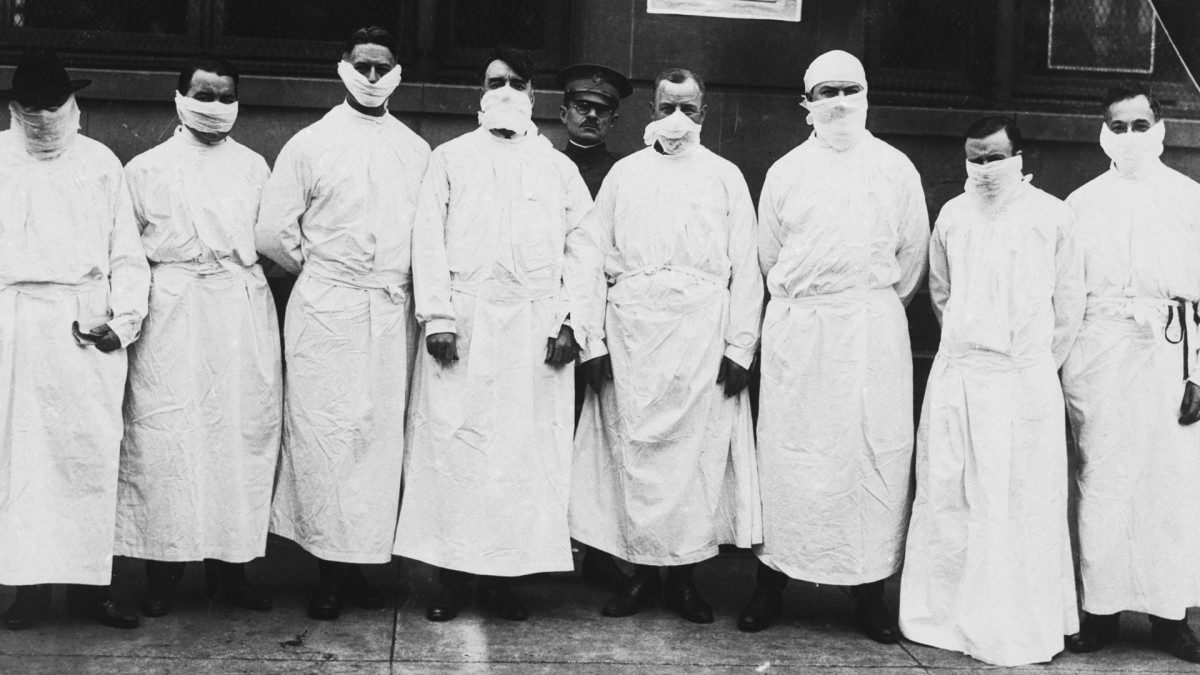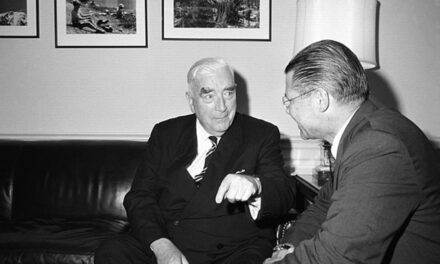THE LONG HISTORY OF MANDATED VACCINES IN THE UNITED STATES
Reading time: 5 minutes
Vaccines against smallpox during the Revolutionary War may have saved the Continental Army from defeat. It’s one example of how mandates have protected the health of Americans for more than two centuries.
 An early smallpox vaccination. Leading Americans, including Thomas Jefferson, Benjamin Franklin and Martha Washington, were inoculated by injection. (The Wellcome Collection)
An early smallpox vaccination. Leading Americans, including Thomas Jefferson, Benjamin Franklin and Martha Washington, were inoculated by injection. (The Wellcome Collection)
Last week, President Biden issued a new order requiring all federal employees, as well as all employees at the Veterans Administration, to receive the COVID-19 vaccine or undergo a strict testing and masking program. Gov. Gavin Newsom of California and Gov. Andrew Cuomo of New York have issued similar orders for their states. While these mandates are the first vaccine requirements for COVID-19, the United States has a long history of protecting the nation’s health through vaccines.
It began with George Washington in 1777, less than one year after the U.S. declared independence from Great Britain. During the Revolutionary War, smallpox was the biggest threat to the Continental Army, threatening to inflict far more damage on the troops than the British forces. While 18th-century Americans didn’t fully understand the science behind smallpox, they knew that it seemed to break out in crowded areas — like big cities or military camps — and killed one-third of all who contracted the disease.
Doctors in Massachusetts first deployed a crude vaccine in the 1720s, and leading figures, including Thomas Jefferson, Benjamin Franklin and Martha Washington, received the inoculation. To administer the vaccine, doctors lanced a pustule of an infected patient and then sliced the same knife under the skin of a healthy individual. The vaccinated patient usually contracted a milder case of smallpox, rendering them immunized against potentially deadlier strains in the future. Despite the life-saving benefits of the vaccine, many officials distrusted the science and blamed the inoculation for spreading the disease. Under this assumption, the Continental Congress had banned inoculations in 1776.
By February of the following year, however, Washington was desperate. Smallpox was attacking his soldiers, and given the close quarters at camp, there was little he could do to prevent its spread. As regiments from the south planned to march north, he took drastic action to prevent them from catching the disease once they reached Philadelphia. After catching smallpox as a teenager and living with the scars on his face to prove it, Washington knew how deadly the disease could be.
On Feb. 5, Washington wrote John Hancock, president of Congress, sharing his plans to “innoculate all the Troops now here, that have not had it,” as well as his intention to “innoculate the Recuits as fast as they come in to Philadelphia [sic].” The general assured Hancock that the army would lose no time while the recruits were in quarantine, as they had to wait while “their cloathing Arms and accoutrements are getting ready” anyway.
Washington also alerted the nearby state conventions, urging them to inoculate their troops before sending them to winter quarters. He also reminded them: “We intend for the present to keep the Matter as much a Secret as possible, and I would Advise you to do the same.” If the British discovered that the Continental Army was recovering from the inoculation, they would certainly seize the opportunity to strike.
A more effective and less gruesome smallpox vaccine was invented in 1796 and since then, American soldiers received the vaccine from the War of 1812 to World War II. Starting in World War I, the Army added vaccines against typhoid. During World War II, vaccines for influenza, tetanus, cholera, diphtheria, plague and yellow fever were also required. By 2006, soldiers in the armed forces received 13 different vaccines, with additional doses depending on location and regional conditions.
But soldiers weren’t the only Americans required to receive a vaccine. In 1902, Massachusetts was once again at the forefront of the vaccine charge and once again, the focus was smallpox. As an outbreak spread across the state, the Board of Health in Cambridge issued a regulation ordering the vaccination of all residents. Pastor Henning Jacobson refused the vaccination, on the grounds that his childhood inoculation had gone badly back in Sweden. He pursued the legal case all the way to the Supreme Court, arguing that the law was a violation of his personal liberty and “unreasonable, arbitrary and oppressive.”
In 1905, the Court declared that the Massachusetts law did not violate the Constitution and affirmed that “in every well-ordered society charged with the duty of conserving the safety of its members the rights of the individual in respect of his liberty may at times, under the pressure of great dangers, be subjected to such restraint.” They also determined that mandatory vaccinations were neither arbitrary nor oppressive if they do not exceed what is “reasonably required for the safety of the public.”
To this day, most schools and universities require a series of vaccines for students to enroll. For example, for a child to enter kindergarten, the Florida Department of Health requires four doses of Diphtheria-tetanus-acellular pertussis (DTaP), four doses of polio (IPV), two doses of measles-mumps-rubella (MMR), two doses of chickenpox, Hepatitis B, and pneumococcal conjugate (PCV13), and haemophilus influenzae type b (Hib). When attending college, I had to show proof of vaccination for the same vaccines. Similarly, health-care and child-care workers are often required to show proof of vaccination for Hepatitis B, influenza, measles, mumps, rubella, pertussis, pneumococcal disease and varicella.
The recent orders by Govs. Newsom and Cuomo, as well as President Biden’s orders for VA and federal employees, are only the latest in a long American history of vaccine requirements dating back to George Washington and the Continental Army. Whether it be fighting in wars or protecting the health of future generations, these examples demonstrate there is nothing more patriotic than preserving public health.
Dr. Lindsay M. Chervinsky is a historian of Early America, the presidency, and the government — especially the president’s cabinet. She shares her research by writing everything from op-eds to books, speaking on podcasts and other media, and teaching every kind of audience. On this site, you’ll learn more about Chervinsky and her work, especially her recent book, The Cabinet: George Washington and the Creation of an American Institution.
This article was originally published in Governing.
Articles you may also be interested in.
The text of this article was republished with the kind permission of the author, Lindsay Chervinsky.








